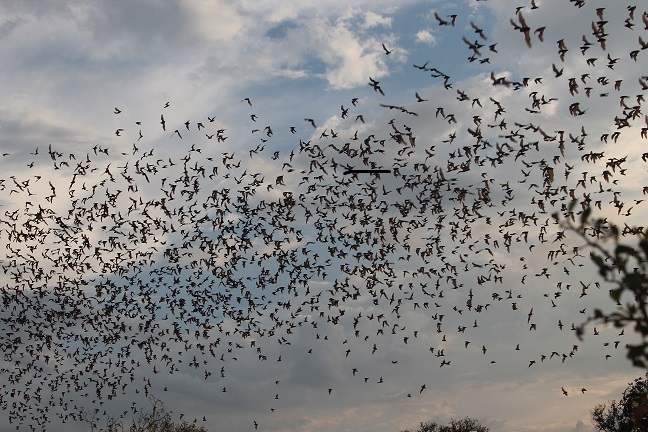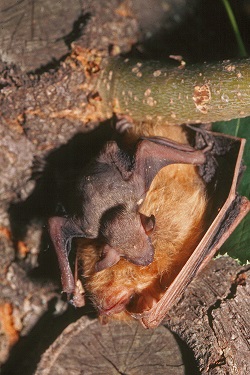Fall is an important time of year for bats as their reproduction cycle begins! As temperatures begin to cool between August and October, bats swarm in the air; circling closely with each other in large groups, often near hibernacula sites. As they swarm, they assess potential partners, mate, and survey potential hibernation spots. This happens in fall when bats have their highest levels of fat before they go into hibernation. Bats rely on fat reserves for fuel to survive the winter as they don’t feed during hibernation. Many temperate species of bats, including ones here in Illinois, exhibit delayed fertilization, meaning female bats store sperm in their uterine tract until they release the sperm to fertilize the eggs, because it would be too energy intensive to be pregnant during hibernation. Here in Illinois, bats release sperm in spring, when there is favorable weather and sufficient insect abundance to sustain pregnancy.

The female bats roost together during the late spring and summer in maternity roosts starting during pregnancy and through lactation. Roosting together warms and protects the pups from predators. When the bats give birth, the babies, called pups, are born upside down and the mothers catch them before they fall. Pups are born blind, hairless, and helpless, completely reliant on their mothers. Mother bats can still fly with their young hanging on even though the pups can weigh 20-30% of the female’s body weight. The pups will cling on with their hind feet and hands as the mothers’ fly looking for food. Pups nurse for 30-40 days and wean when their wings develop enough to fly, a few months after birth depending on species.

Most species of bats only have one pup a year. Some species like the Hoary Bat (Lasiurus cinereus) have twins; however, this slow reproduction rate emphasizes why bat populations are so vulnerable. Bat populations take a long time to recover from declines since each female only produces one pup a year, and not all pups survive their first year. This is particularly important in the face of large-scale habitat loss and white-nose syndrome, a devastating disease. It is also important to protect maternity roosts because the trees provide critical habitat for reproduction and too much disturbance can cause the mothers to abandon the pups. Understanding the bat’s reproductive cycle allows us to help protect them when they are most vulnerable and prioritize conservation to protect future populations.
